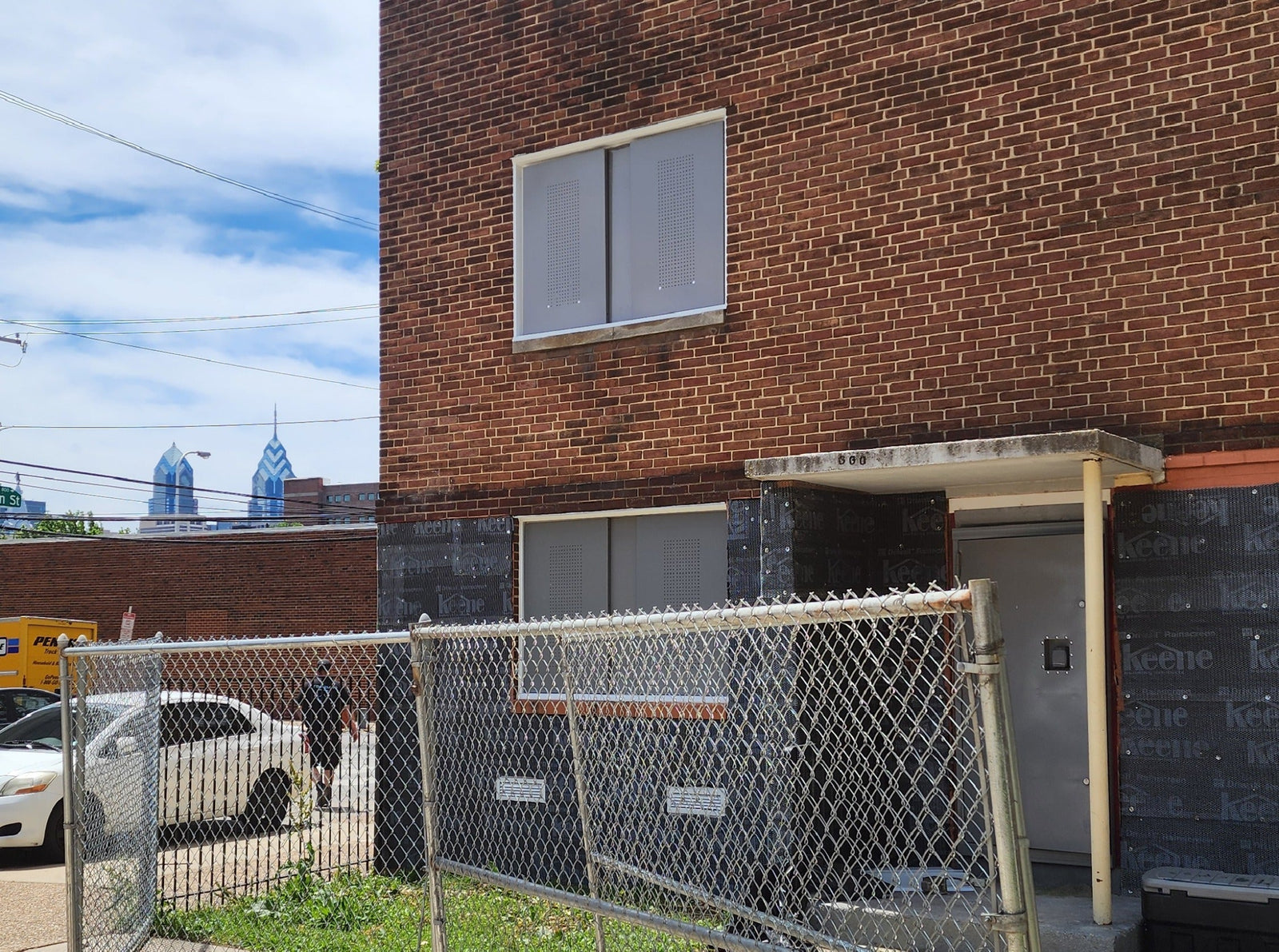The Hidden Occupants: Understanding Squatters and Vacant Property Security

Vacant properties, from disused commercial buildings to unoccupied residential homes, often represent a significant investment and future potential for their owners. However, these empty spaces can attract an unwelcome and challenging problem: squatters. Squatting poses substantial risks to property owners, ranging from property damage and financial loss to complex legal battles.
Understanding the dynamics of squatting and the specific legal landscapes in key urban centers like Philadelphia, Baltimore, and Washington D.C. is crucial for effective vacant property security. Let's jump into some of these risks and the importance of proactive measures.
What is Squatting and Why is it a Risk?
A squatter is an individual or group who occupies a vacant or abandoned property without the owner's consent or legal right. Unlike tenants, they have no lease, rental agreement, or ownership claim. While it may seem like simple trespassing, the legal reality can be far more intricate due to concepts like "adverse possession" and local jurisdictional nuances.
The risks associated with squatters in vacant properties are multifaceted:
- Property Damage: Squatters may cause significant damage to the property, either intentionally or through neglect. This can include structural harm, plumbing and electrical issues, and extensive clean-up costs.
- Vandalism and Theft: Occupied vacant properties are often targets for further vandalism or the theft of valuable materials like copper piping, fixtures, or appliances.
- Safety Hazards: Squatters may engage in unsafe practices, such as illegal utility hook-ups or fires, posing risks to the property itself and adjacent structures. Reports from Baltimore, for instance, have explicitly linked vacant properties, some occupied by squatters, to devastating fires.
- Legal Complexities and Costs: Removing squatters can be a lengthy and expensive legal process. Property owners cannot simply use "self-help" eviction methods (like changing locks or shutting off utilities) as these are illegal and can expose owners to further legal liability.
- Financial Loss: Beyond direct damage and legal fees, owners face lost potential rental income, increased insurance premiums, and a potential decrease in property value due to the presence of unauthorized occupants.
- Community Impact: Squatter-occupied properties can become nuisances, contributing to blight, crime, and a sense of insecurity in the surrounding neighborhood.
Squatters and Vacant Property Security: A Look at Philadelphia
Philadelphia, with its significant number of vacant properties, presents particular challenges for owners. While exact statistics on squatter-occupied properties are not readily available, some advocates suggest hundreds of individuals are living in vacant homes out of necessity. Estimates indicate Philadelphia has thousands of vacant properties, a stark reality for the city.
In Philadelphia, vacant property security is complicated by Pennsylvania's adverse possession laws. A squatter in Pennsylvania can potentially claim legal ownership of a property if they occupy it continuously, actually, openly and notoriously, exclusively, and "hostilely" (without permission) for 21 years. While 21 years is a long period, it underscores the importance of prompt action. Recent legislative efforts, such as Act 88 of 2024, aim to streamline the removal process for individuals who have never been legal tenants, making it an ejectment action rather than a traditional eviction. However, this still requires formal legal proceedings, including serving a notice to vacate and filing an ejectment action in court.
Squatters and Vacant Property Security: A Look at Baltimore
Baltimore City has a substantial number of vacant homes, with recent reports indicating nearly 13,000 such properties as of early 2025. This high vacancy rate, particularly in certain neighborhoods, sadly makes these properties susceptible to unauthorized occupation. The link between vacant properties and serious incidents, including fires that have tragically resulted in fatalities, highlights the critical need for robust vacant property security in Baltimore.
Maryland's adverse possession laws stipulate a 20-year continuous occupation period under similar conditions (open, notorious, exclusive, hostile, and actual). While paying property taxes does not shorten this period in Maryland, it can serve as evidence supporting a squatter's claim. Property owners in Baltimore dealing with squatters typically must file a "wrongful detainer complaint" in District Court, a specialized legal process distinct from standard tenant evictions.
Squatters and Vacant Property Security: A Look at Washington D.C.
While Washington D.C. may not exhibit the same scale of concentrated vacant properties as Baltimore or Philadelphia, empty properties and temporarily unoccupied buildings still exist and can become targets for squatters. Data on squatter prevalence in D.C. is less abundant, but the fundamental risks remain.
In Washington D.C., the adverse possession period is 15 years of continuous occupation. The squatter must meet criteria such as hostile possession, actual possession, open and notorious possession, exclusive possession, and demonstrate acting as an owner (e.g., maintaining the property). Successfully proving adverse possession in D.C. is considered rare, yet the legal framework means property owners cannot ignore unauthorized occupation. The process for removing squatters in D.C. involves serving a 30-day eviction notice, filing a verified complaint with the D.C. Superior Court, and potentially involving the U.S. Marshals Service if the squatter does not vacate after a court order.
Recognizing the Signs of Squatter Occupation
Early detection is key to mitigating the risks associated with squatters. Property owners should be vigilant for the following signs:
- Changes to Locks or Access Points: New locks on doors, broken windows, or signs of forced entry.
- Unusual Activity: Lights on at odd hours, unfamiliar vehicles parked nearby, or strange noises coming from within the property.
- Blocked or Covered Windows: Curtains, blankets, or newspaper covering windows to obscure the interior.
- Accumulation of Trash or Debris: New garbage outside the property, or a noticeable increase in refuse.
- Presence of Personal Belongings: Furniture, clothing, or other items visible through windows or around the property.
- Utility Usage: Unexplained utility bills or signs of unauthorized hook-ups.
- Lack of Maintenance: If the property was well-maintained but now shows signs of neglect, it could indicate an unauthorized presence.
- "No Trespassing" Signs: Ironically, squatters sometimes put up their own "No Trespassing" signs to deter others and assert their perceived control.
- Reports from Neighbors: Neighbors are often the first to notice suspicious activity in a vacant property. Maintaining good relationships with those living nearby can provide invaluable early warnings.
The Importance of Proactive Vacant Property Security
Given the significant legal complexities, financial burdens, and potential for damage, proactive vacant property security is paramount. Leaving a property unsecured is an open invitation for squatters and other illicit activities.
Effective security strategies for vacant properties often involve a combination of measures:
- Regular, Documented Inspections: Frequent checks by a reliable party can detect unauthorized entry early.
- Robust Physical Deterrents: Securing all entry points with high-quality locks, boarding up vulnerable windows and doors, and installing sturdy perimeter fencing.
- Advanced Surveillance Systems: Implementing alarm systems, motion-activated lighting, and remote-monitored CCTV cameras to detect and deter intruders.
- Clear Signage: Posting "No Trespassing" and "Private Property" signs prominently.
- Engagement with Local Law Enforcement: Informing local police of the property's vacant status and requesting increased patrols.
While no measure can guarantee absolute protection, a comprehensive and proactive approach to vacant property security significantly reduces the likelihood of squatters and the associated risks. Property owners must understand that the cost of prevention is almost always less than the cost of removal and repair.

